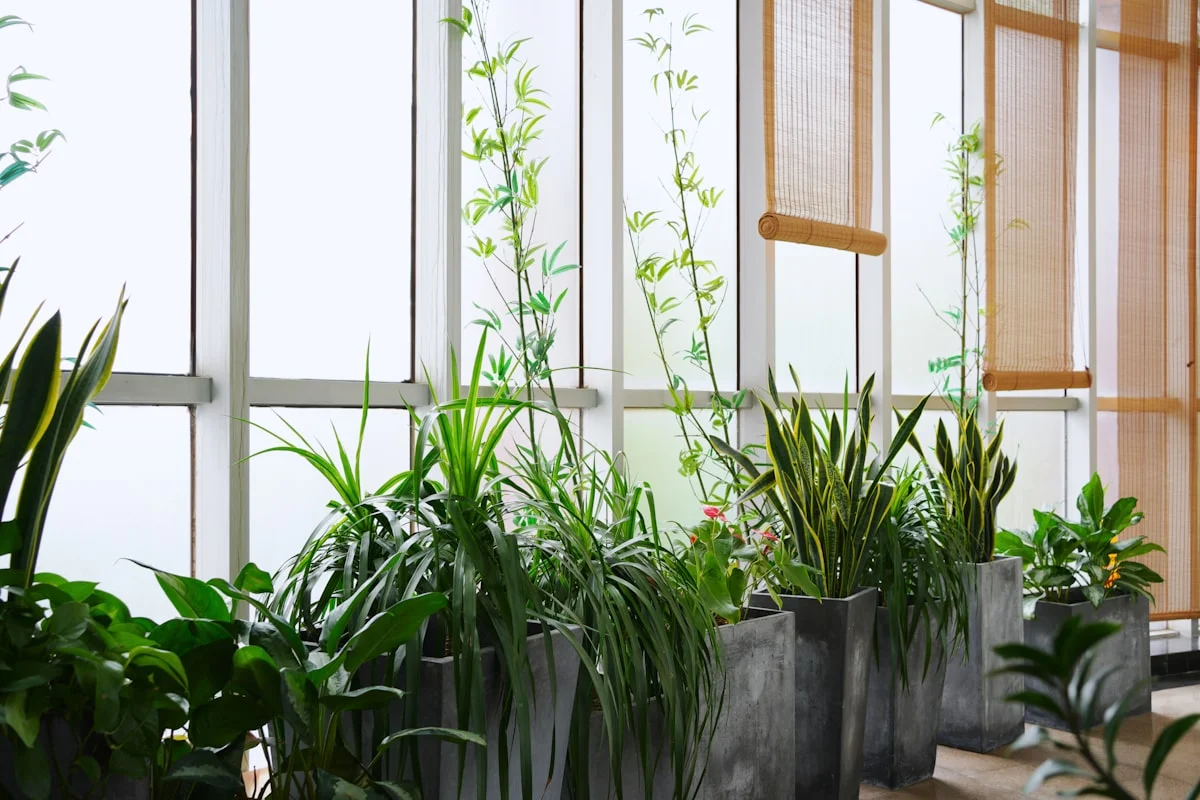# The Best Air-Purifying Indoor Plants to Freshen Your Home in 2025
Why Air-Purifying Indoor Plants Are Essential for a Healthy Home
In 2025, more people than ever are turning to air-purifying indoor plants to improve their living spaces. These natural air filters not only enhance home aesthetics but also remove harmful toxins, boost oxygen levels, and promote overall well-being. Studies from NASA and other environmental research institutions confirm that certain air-purifying indoor plants can effectively reduce pollutants like formaldehyde, benzene, and ammonia. Whether you’re a seasoned plant parent or a beginner, incorporating these green allies into your home can make a significant difference in air quality.
Indoor air pollution is a growing concern, especially in urban environments where ventilation may be limited. Common household items such as cleaning products, furniture, and synthetic materials release volatile organic compounds (VOCs) that can affect respiratory health. Fortunately, nature provides an elegant solution—plants that naturally detoxify the air. By selecting the right air-purifying indoor plants, you can create a fresher, healthier living space without relying solely on mechanical air purifiers.
Top Air-Purifying Indoor Plants to Consider in 2025
One of the most effective air-purifying plants is the Snake Plant (Sansevieria). Known for its resilience and striking upright leaves, this plant excels at filtering out formaldehyde, commonly found in cleaning products and adhesives. Unlike most plants, the Snake Plant releases oxygen at night, making it an excellent choice for bedrooms. Another powerhouse is the Peace Lily (Spathiphyllum), which not only removes toxins like benzene and ammonia but also adds a touch of elegance with its white blooms. This plant thrives in low-light conditions, making it ideal for offices and darker corners of the home.
The Spider Plant (Chlorophytum comosum) is another top contender for air purification. Its long, arching leaves and easy-care nature make it a favorite among beginners. Research shows that the Spider Plant effectively reduces carbon monoxide and xylene levels. For those looking for a larger statement plant, the Rubber Plant (Ficus elastica) is an excellent option. Its broad, glossy leaves absorb airborne toxins while adding a lush, tropical vibe to any room. These plants are not only functional but also enhance interior decor effortlessly.
How Air-Purifying Plants Work to Clean Your Indoor Environment
The science behind air-purifying indoor plants is fascinating. Through a process called phytoremediation, plants absorb harmful chemicals through their leaves and roots, breaking them down into harmless byproducts. Microorganisms in the soil also play a crucial role in neutralizing toxins. This natural filtration system is both efficient and sustainable, making plants a cost-effective alternative to electric air purifiers. In 2025, as sustainability becomes a priority, more homeowners are embracing this green solution.
Another key benefit of these plants is their ability to increase humidity levels. Many indoor environments suffer from dry air, especially during winter months when heating systems are running. Plants like the Areca Palm (Dypsis lutescens) release moisture into the air, reducing respiratory irritation and dry skin. Additionally, the presence of greenery has been linked to reduced stress levels and improved mental clarity, making air-purifying plants a holistic wellness tool.
Caring for Your Air-Purifying Indoor Plants
To maximize the benefits of your air-purifying indoor plants, proper care is essential. Most of these plants thrive in indirect sunlight and require moderate watering—overwatering is a common mistake that can lead to root rot. The Boston Fern (Nephrolepis exaltata), for example, prefers consistently moist soil and high humidity, making it perfect for bathrooms. On the other hand, the ZZ Plant (Zamioculcas zamiifolia) is drought-tolerant and can survive in low-light conditions, making it a low-maintenance choice for busy individuals.
Regularly dusting the leaves of your plants ensures they can efficiently absorb pollutants. A gentle wipe with a damp cloth or a light misting can keep them functioning at their best. Repotting every 1-2 years also promotes healthy growth, as fresh soil provides essential nutrients. By following these simple care tips, your air-purifying plants will thrive and continue to improve your home’s air quality for years to come.
The Future of Air-Purifying Indoor Plants in 2025 and Beyond
As awareness of indoor air quality grows, the demand for air-purifying indoor plants is expected to rise in 2025. Innovations in plant breeding may introduce new varieties with enhanced air-cleaning capabilities. Additionally, smart planters with built-in sensors could help monitor soil moisture, light levels, and air quality, making plant care even more accessible. Integrating greenery into urban living spaces will likely become a standard practice, supported by both environmental and health research.
Beyond their functional benefits, air-purifying plants contribute to biophilic design—a trend that emphasizes human connection with nature. Architects and interior designers are increasingly incorporating living walls and indoor gardens into homes and workplaces. This shift not only improves air quality but also fosters a sense of tranquility and productivity. In the coming years, we can expect even more creative ways to blend nature with modern living.
Final Thoughts on Choosing the Right Air-Purifying Plants
Selecting the best air-purifying indoor plants depends on your lifestyle, space, and aesthetic preferences. Whether you opt for the low-maintenance Snake Plant, the elegant Peace Lily, or the humidity-boosting Boston Fern, each plant offers unique benefits. By incorporating these natural air filters into your home, you can enjoy cleaner air, enhanced well-being, and a greener living environment in 2025 and beyond. Start small with one or two plants and gradually expand your indoor garden—your lungs (and your decor) will thank you.
Remember, the key to success with air-purifying plants is consistency in care. Even the hardiest plants need attention to thrive. With the right selection and maintenance, your home can become a sanctuary of fresh, toxin-free air, proving that nature truly is the best purifier.

